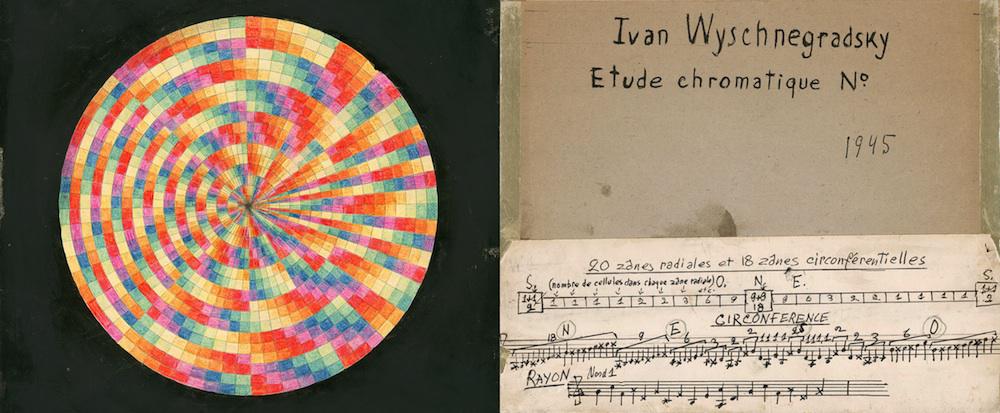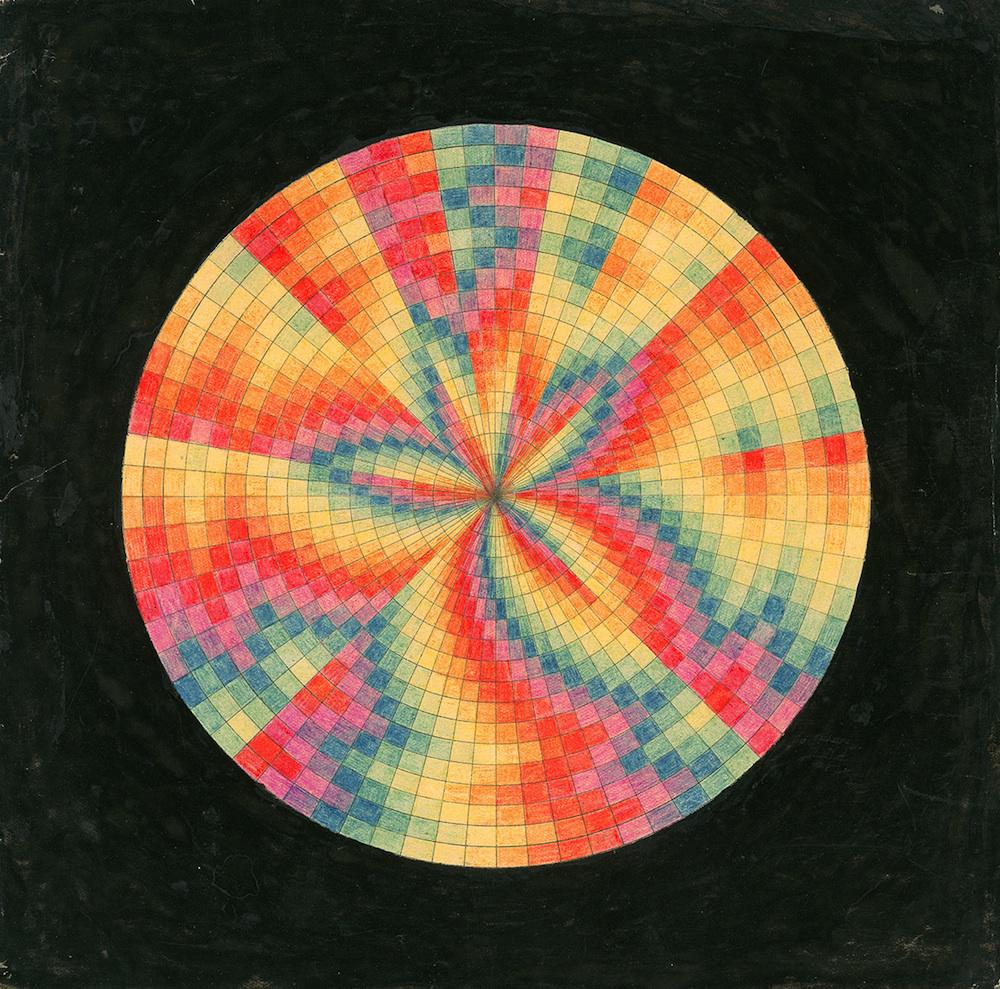Russian composer Ivan Wyschnegradsky was a 20th-century avant-garde pianist devoted to “creating a work capable of awakening in every man the slumbering forces of cosmic consciousness,” according to his journal. To achieve this mystical ideal, he set out to create sounds that no one had ever heard before. His music was microtonal, a style that transcends the limitations of the 12-scale tuning system in traditional Western music.
Microtones are essentially notes between notes—like the incremental dashes between the 12-inch markings on a ruler. Because standard pianos cannot play this kind of music, Wyschnegradsky moved to Paris in 1923 to start building a new one. He insisted that he was not fleeing the Soviet Union to escape Communist rule but only to work with the best European piano builders. When his quarter-tone piano was finished in 1929, he could start composing his innovative sounds.
In the late 1940s, he translated his “ultrachromatic” compositions into these mesmerizing rainbow color wheels. He applied the concepts of synesthesia, blurring the line between sound and color. Each cell on these drawings corresponds to a different semitone in his complex musical sequences. If you look closely enough, you can follow the spirals as if it were a melody and “listen” to the scores they represent.
It would take Wyschnegradsky over 60 years to see his mind-altering magnum opus, La Journée de l’Existence (The Journey of Existence), performed in public. In 1978 in Paris, he presented the nearly hourlong orchestral piece; you can listen to it here. He died a year later. “He was ahead of his time,” microtonal composer and Princeton University graduate student Noah Kaplan told me. “And hopefully he will be more appreciated once the world catches up to him.”
Hat tip to Noah Kaplan and Thomas Patteson for their helpful insights.

Courtesy of the Wyschnegradsky Association

Courtesy of the Wyschnegradsky Association

Courtesy of the Wyschnegradsky Association

Courtesy of the Wyschnegradsky Association